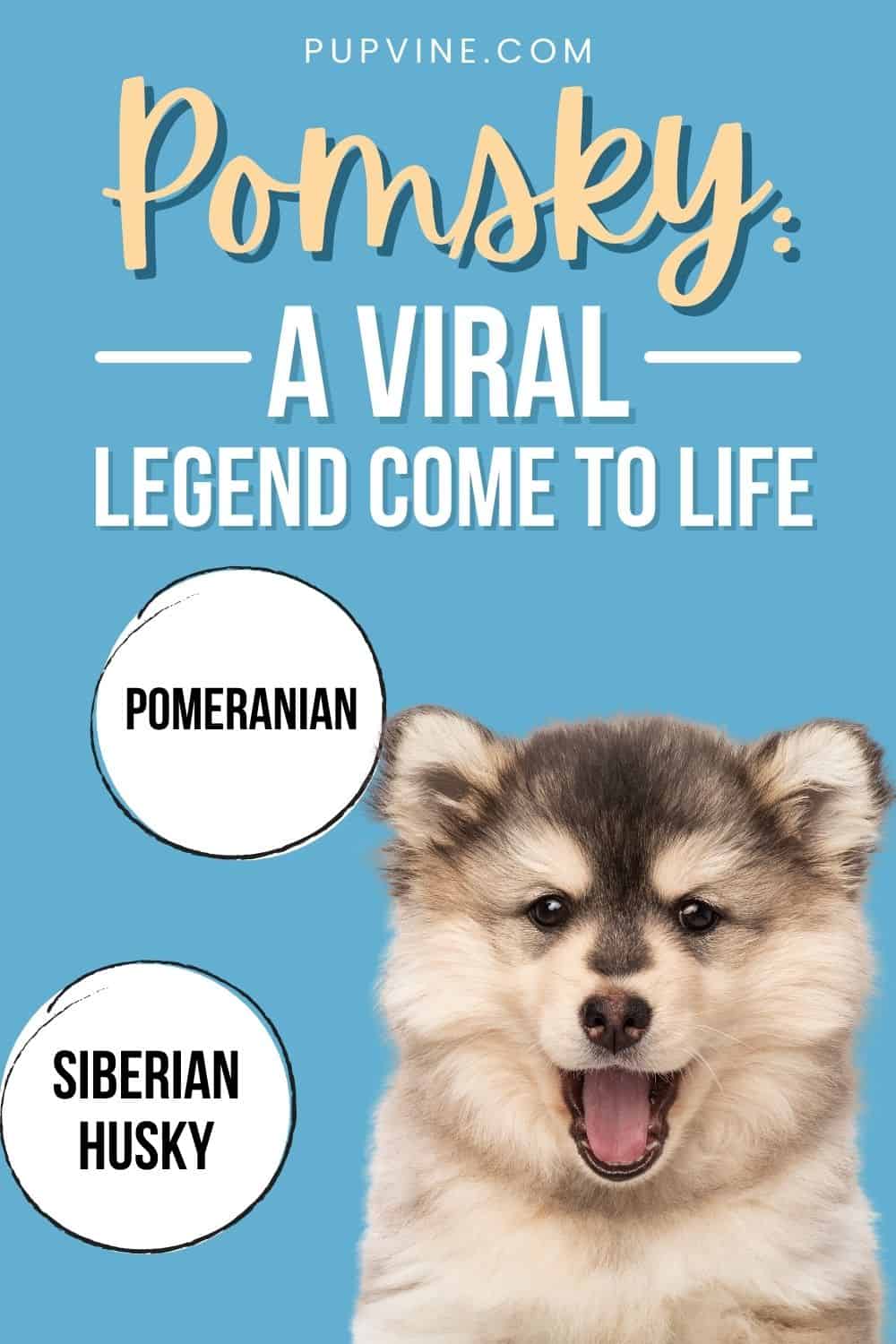Hey, dog lover, what’s that new species at the dog park? It looks like a miniature version of a Siberian Husky! What? A Pomsky? Never heard of it!
Well, fellow dog lovers, a Pomsky is a Siberian Husky and Pomeranian crossbreed. It’s a small size version of a Husky that’s gotten an immense popularity boost lately. But let’s not forget about the Pomeranian dogs. They’re the ones to blame for this puppy’s stubbornness and playfulness.
Is the Pomsky pup now more clear to you? No? Then let’s get straight to business and help you understand this breed of dog better.
History Of The Pomsky Dog
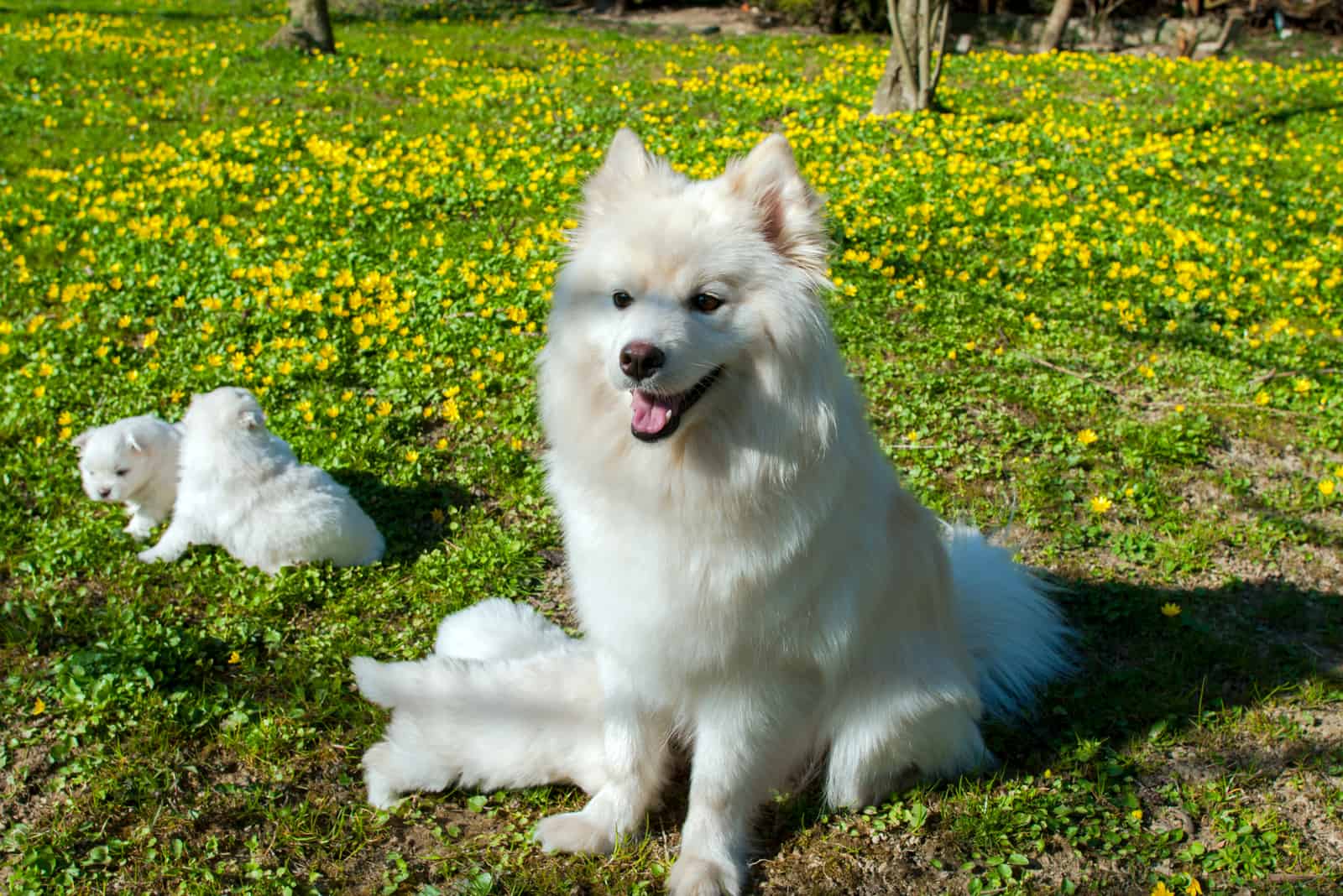
A once viral Buzzfeed article from 2011 is the main culprit as to why we have Pomskies, a Pomeranian and Husky mix, as pets nowadays. Somebody’s creativity gave rise to a whole new dog breed with ongoing popularity.
When the viral post that featured Pomsky puppies went online, everyone wanted one of those babies for themselves. But not everyone knew those were, in fact, Finnish Lapphund puppies! The demand for real Pomsky pups became even bigger, but it wasn’t an easy job to get this specific breed. The dog breeders had a difficult task in front of them.
If you look closely at the puppy parents, the Pomeranian and Siberian Husky, you’ll notice an obvious difference; their size! It was unsafe to naturally breed these dog breeds, so to get little Pomskies, artificial insemination had to happen.
This is probably the main reason why Pomskies are still so rare!
Sadly, unreliable dog breeders still use the unsafe method of getting the Pomsky pups. They result in affordable puppies. However, they have no pedigree, and they do have genetic predispositions to many health issues.
This is why it’s so important to do your research before buying one of these designer dogs.
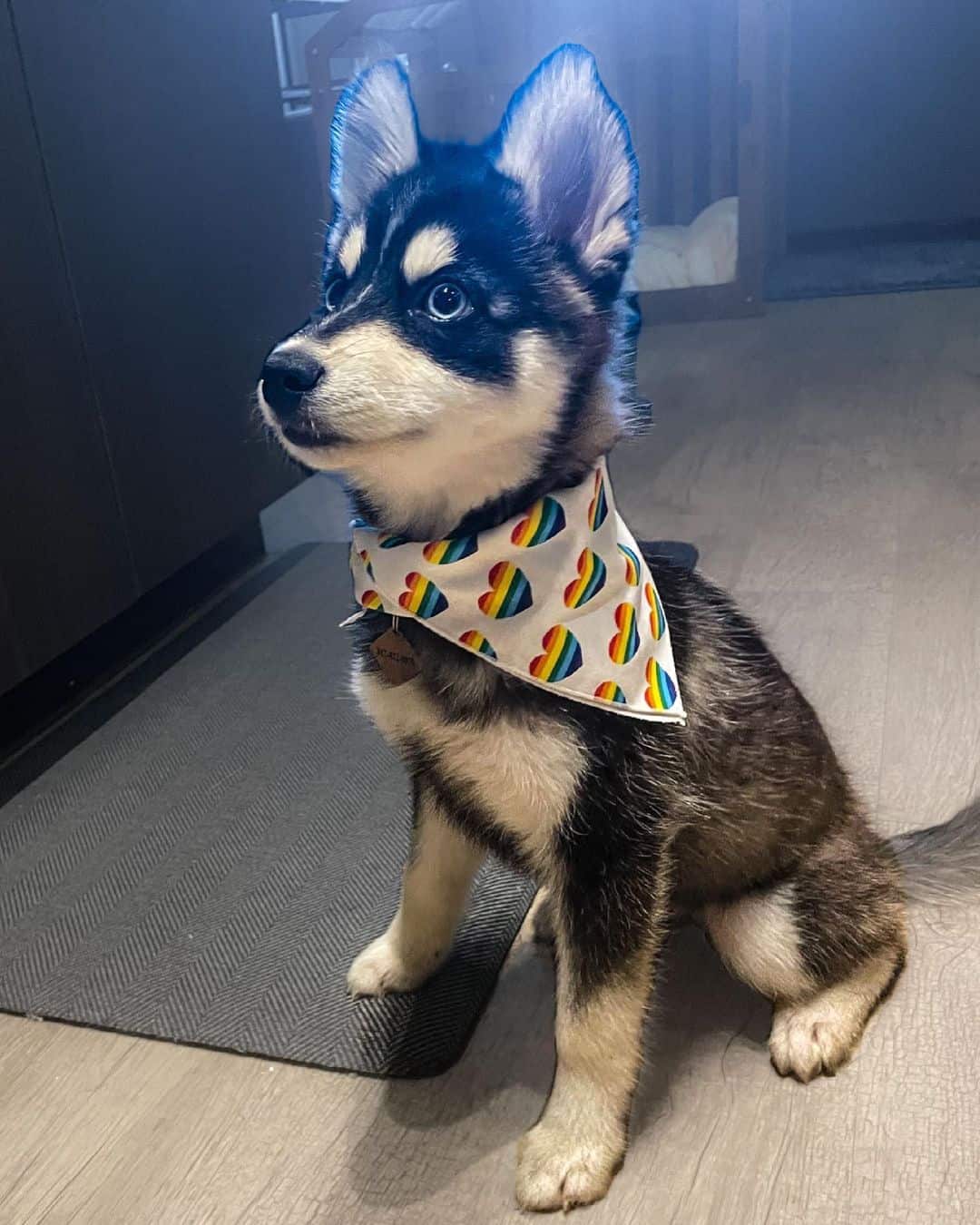
Photo from @dontgojasonwaterfallstx
The American Kennel Club doesn’t recognize the Pomsky as a true dog breed. On the other hand, the International Pomsky Association and the Pomsky Club of America allow reputable breeders to register puppies and certify the parents’ pedigree and high standard for temperament, health, and appearance.
No matter how stunning this breed is, many Pomskies are often surrendered to shelters and pet rescues by owners who can’t deal with their excessive barking and unique personalities.
Luckily, there are future dog owners out there who’d love to own a Pomsky but can’t afford it at the moment. That’s when the shelters rush in and help!
The Pomsky is truly a loving puppy, but they’re also very demanding. If you’re a loving and patient future dog owner with lots of experience with dogs, you might want to proceed and check out what Pomskies are like.
Pomsky Full Grown: What Does It Look Like?
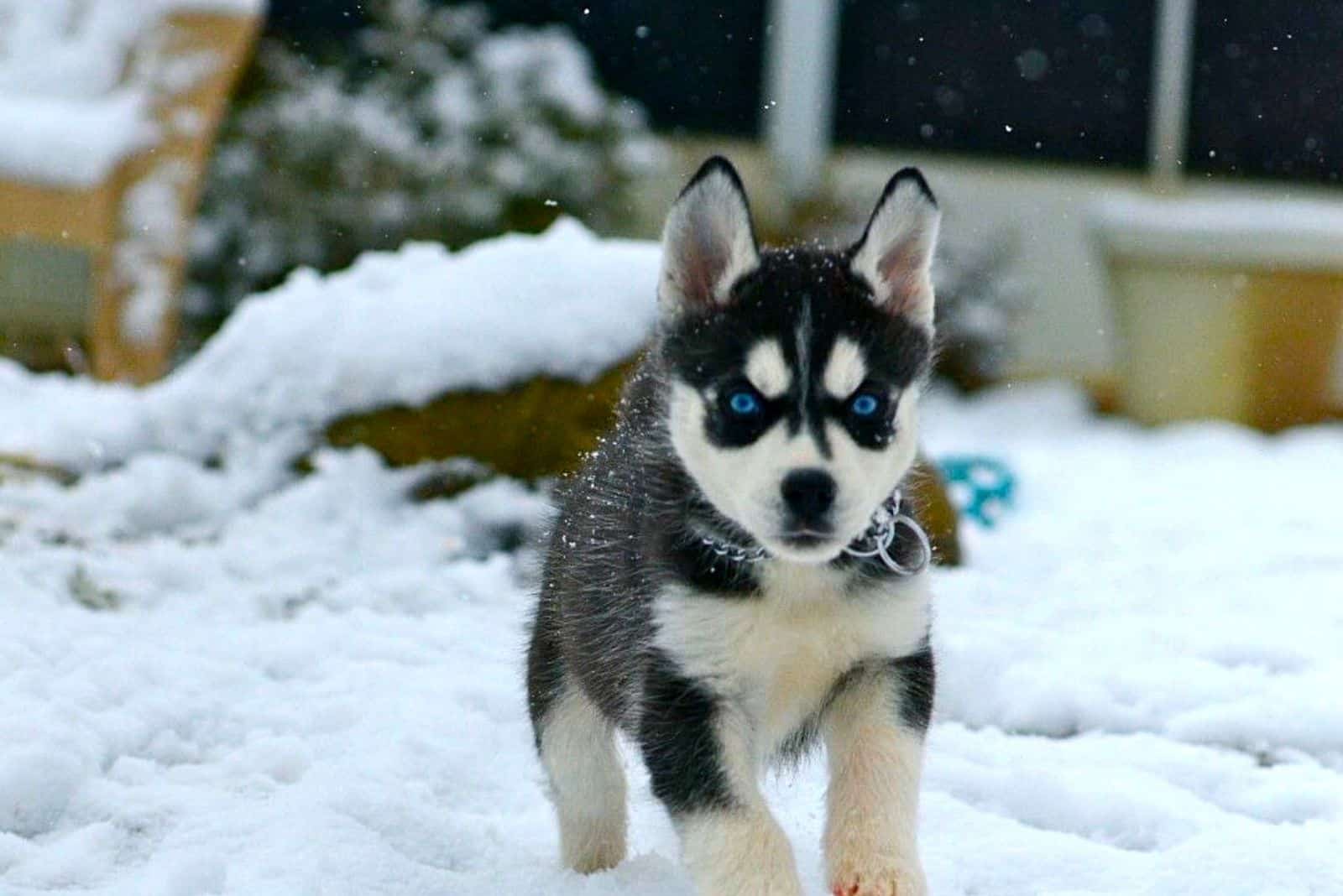
A full-grown Pomsky is a small to medium-sized dog that’s somewhere between its Pomeranian and Siberian Husky parents in size. Since the breed standard has yet to be established, there are still size differences. However, many dog breeders believe a Pomsky will not be heavier than 38 pounds when it’s full-grown.
Even though the Pomsky looks like its Siberian Husky parent, it doesn’t require the same care this large dog does. In other words, the Pomsky is the perfect dog for those who want a Husky but can’t deal with their size and requirements.
Since both parent breeds are multi-color, the Pomsky also comes in a variety of coat colors and eye colors. Do different eye colors ring a bell? Their thick coats can be a combination of brown, red, grey, blue, or white. Pomsky puppies can also inherit the same coat pattern as their Husky parents , like the adorable tuxedo or brindle style.
They have a fluffy double coat with a soft undercoat that needs to be brushed daily. No, it won’t stop the hair from getting everywhere, but imagine the situation if you didn’t brush at all! Guess you can say this breed is prone to shedding, eh?
As for eye color, the Pomsky can have a range of eye colors, from a light hazel to piercing blue. Much like the Siberian Husky side of the family, this puppy can also have two different colored eyes.
However, coats can vary greatly in quality and length. Some Pomskies have a shorter coat that sheds a lot, while others have a fluffy coat that requires daily brushing. Both types blow their coats each summer, which lasts for a month or so. Phew, what a crazy time of year!
Since both parents have a curved tail, the Pomsky will also proudly carry one. Thanks to the double-coat feature, the Pomsky is suited for cold climates, unlike most tiny lapdogs.
Is The Teacup Pomsky A Real Pomsky?
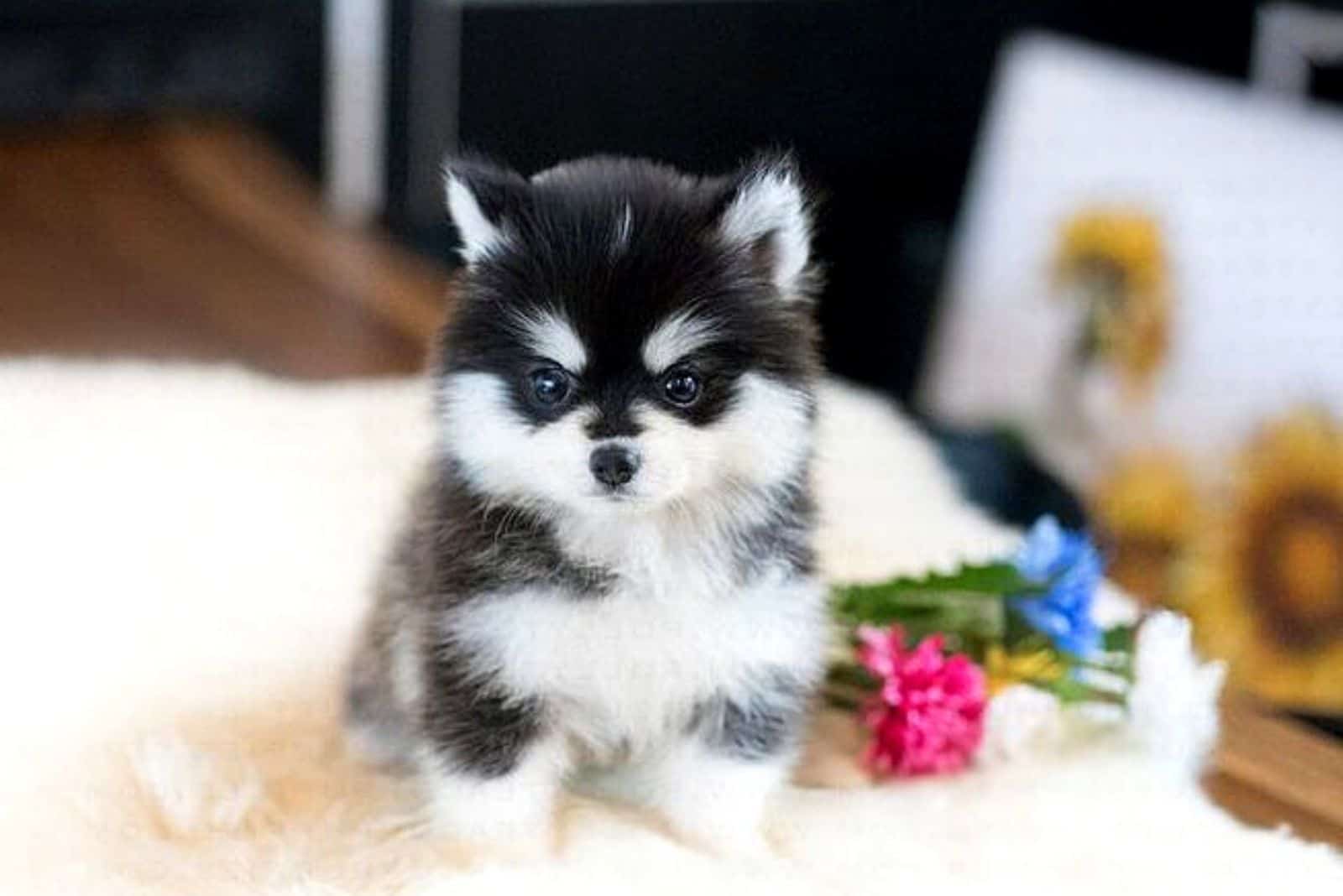
Lately, some breeders have begun advertising smaller sizes of the Pomsky, aka the teacup Pomsky. They might look adorable but beware: these puppies are unethical and carry a high risk of many health problems.
The American Kennel Club ( AKC ) doesn’t recognize any of the teacup breeds, not the teacup Husky or Pomeranian parent, precisely because of those health concerns.
Choose health over appearance anytime!
Do Pomskies Shed? Are They Hypoallergenic?
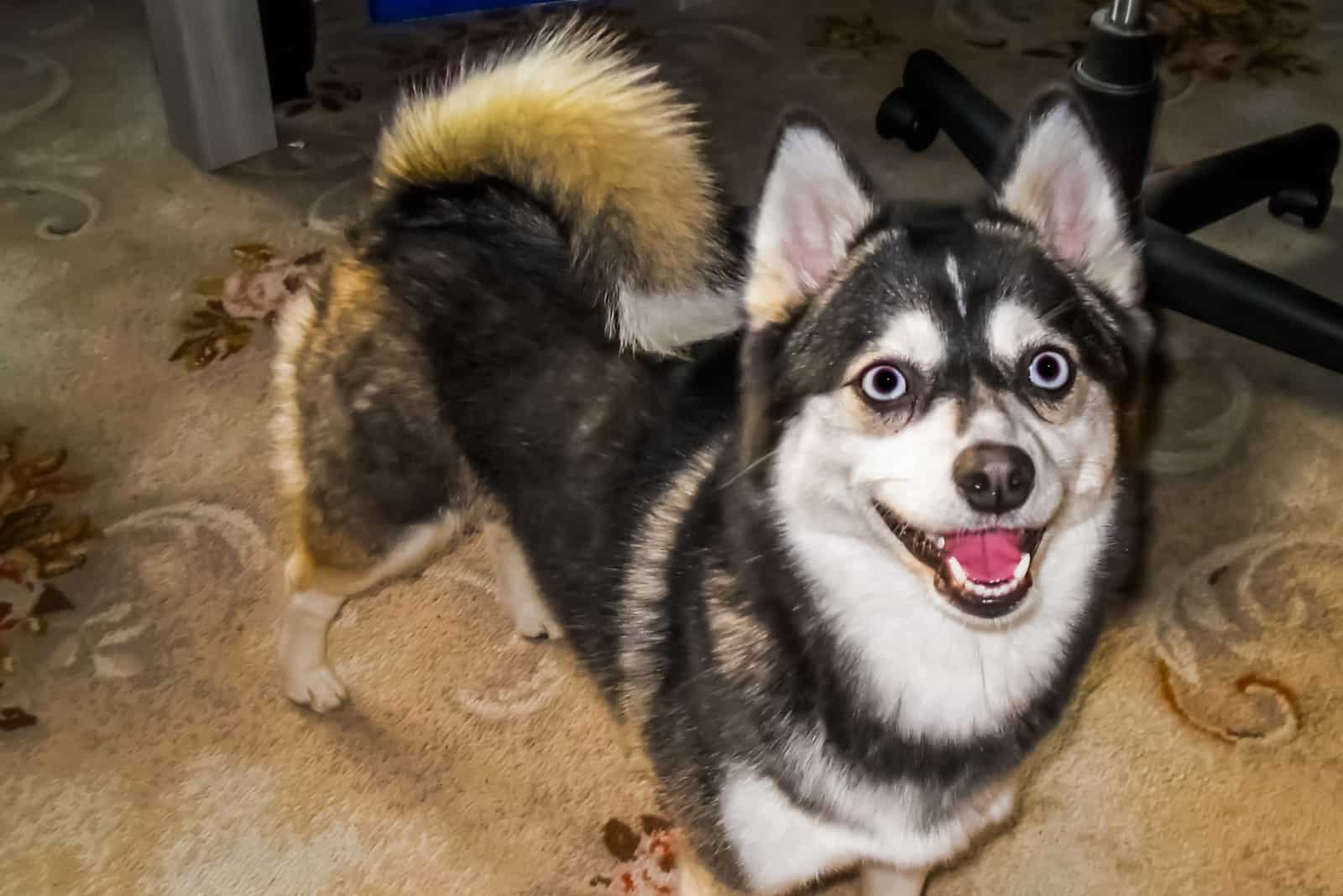
Imagine the scene: warm weather has finally hit us with warm sun rays and tons of pollen in the air. The last thing a person with allergies needs is dog hair. EVERYWHERE. No, it’s not only a few hairs; we’re talking about cotton balls of dog hair!
Does that sound like something a hypoallergenic dog would do?
Exactly.
Huskies shed, Pomsky inherited that trait.
Pomsky Temperament: What Are They Like?

Just like their appearance, the temperament of this mixed breed is also tough to predict and depends entirely on each puppy’s individual genetics.
Usually, Pomskies inherit traits from both parents. Meaning they’re highly intelligent, loving, playful, loyal, and confident. Those are the common traits for the Husky and Pomeranian.
Naturally, there are inherited personality traits that aren’t that great. For example, Huskies are well-known for being talkative dogs who howl and whine all the time. Remember that talking Husky from YouTube? Yeah, exactly!
On the other hand, Pomeranians are huge barkers. Put these two together, and you’ll get a rather vocal puppy that won’t stop yapping. People sensitive to noise should keep this in mind before getting a Pomsky.
Much like Pomeranians, Pomskies are extremely protective of their owners and serve as excellent guard dogs and watchdogs, despite their size. They will often try to take down anything they believe is a threat to their family.
They are adorable, but all that over-protectiveness can be annoying.
While Huskies are amazing with small children, the Poms aren’t that fond of them. Some Poms tolerate them, but most of the time, they ignore the childrens’ presence. Why? Because the Pom always wants to be the center of attention!
Older children might be better companions for the Pomsky.
As far as other animals go, the Pomsky has a high prey drive inherited from the Siberian Husky. This means they have a natural instinct to chase smaller animals like cats or other tiny toy dogs.
If you plan to have your new Pomsky hang out with someone smaller than him, socialization and training are a must.
See how we’ve talked about the parent breeds? That’s because we don’t know how the Pomsky puppy will turn out. This crossbreed is still developing, and it will take years to establish a breed standard.
Still, it’s important to know these general guidelines on the Pomsky’s temperament. Any Pomsky, no matter if he takes after the Husky or the Pomeranian, can be properly trained and socialized to the point where they represent the finest members of the canine community.
Training is crucial for Pomskies. Be prepared to spend many hours educating your puppy. It’s not that they’re not trainable – they really are! It’s only to achieve the best possible result.
As we said before, the Pomsky is an intelligent dog with an independent nature. The behavior we spoke about earlier can be avoided by keeping the training consistent and giving them lots of treats and praise.
Since they’re so smart, it isn’t rare to see a Pomsky pushing your boundaries while training. If you can’t handle it, just ask a professional to do it for you.
Taking Care Of The Pomsky Puppies
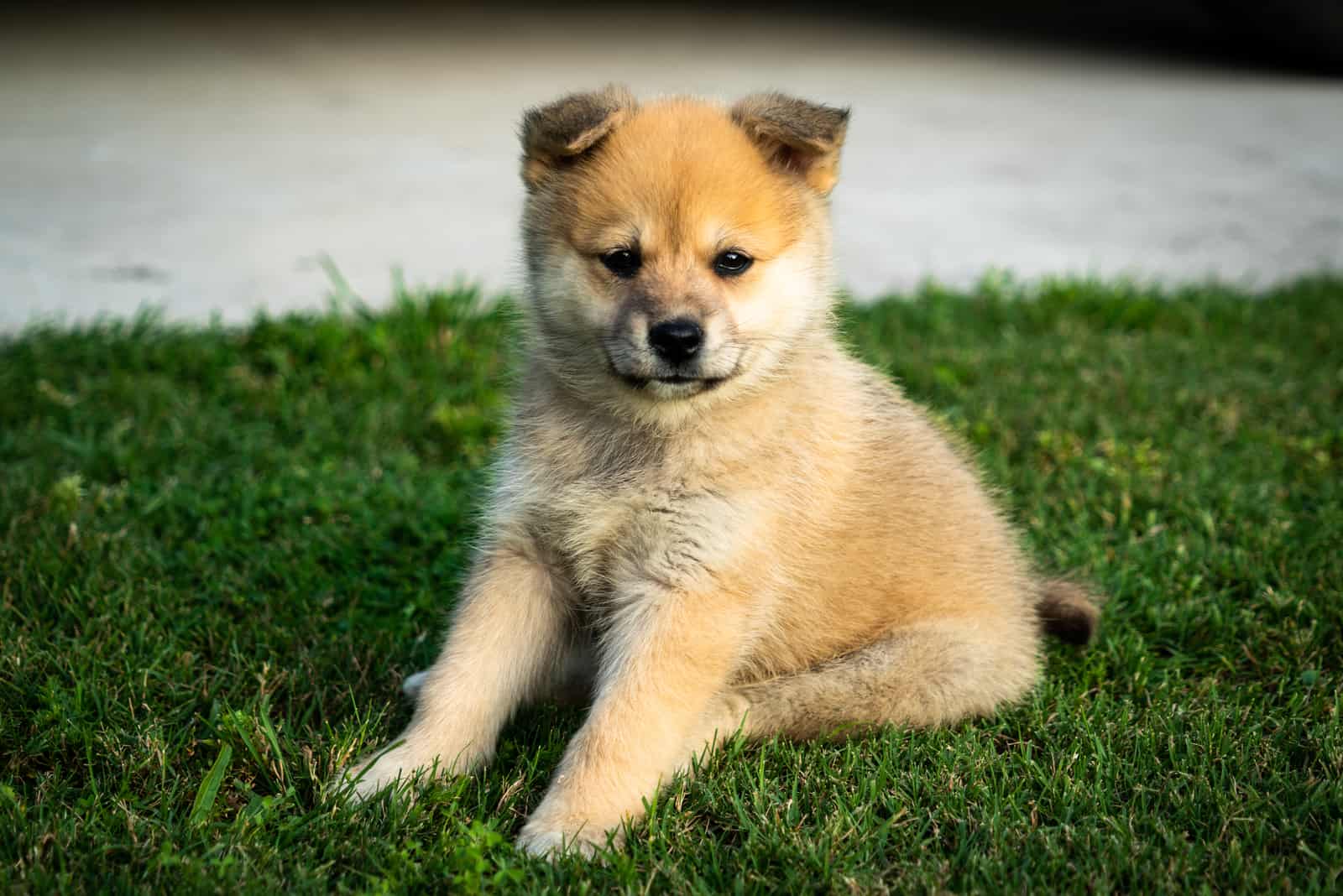
Pomskies are adaptable dogs who don’t need big and spacious houses to feel good. Their size is compact and well-built for apartment living.
Sure, their size is alright. But what about their energy level? Do Pomskies require daily walks? Of course, they do! This is a dog with a high energy drive that simply has daily exercise needs.
Pay attention to them. Pomskies aren’t attention-seekers just because; they need their owner present all the time, or they will become nervous and develop separation anxiety. Anxiety then leads to many problems with barking, whining, urination, chewing, etc.
The Pomsky breed is playful and enjoys playtime with toys. Their Husky genes love playing with puzzle games and showing off how smart they are. Give them such toys to encourage ongoing mental stimulation. Outdoor time is their favorite, especially when it snows. With such a thick mane, there’s no winter for these guys!
Hotter months mean it’s swimming time! The Pomsky loves chilling in the water but also in freshly-dug dirt. Just keep them away from the flowerbeds, okay?
After their energy bar is finally wasted, it’s snuggle time and time to smuggle in some treats and belly rubs.
Grooming is an essential step in taking proper care of a Husky Pomeranian Mix. Daily brushing is something most dog breeds require. The Pomsky is no exception. With a thick double coat, this dog breed tends to shed a lot. If you don’t brush it, you’ll have a messy situation on your hands.
Summer is the time of year when the Pomsky sheds even more (if that’s even possible!). Besides daily brushing, monthly baths and/or visits to the groomer are needed.
Luckily, winter means the shedding will finally take a break. There won’t be a need for a professional groomer that often.
Other grooming tasks include examining the dog’s nails once a month and brushing their teeth as often as daily or weekly. With a vet-approved toothbrush and a doggy toothpaste, the Pomsky will have nice and shiny pearly whites.
Pomeranian Husky Mix Health Problems

Once again, this is a fairly fresh designer dog, so we don’t have all the info on the breed we wish we would. It is quite hard to predict whether the Pomskies have any hereditary health issues.
As always, we can only assume the health problems found in the parent breeds can manifest in the crossbreed. Simple genetics!
One of the major health conditions the Pomsky suffers from are dental issues. Dental problems can be caused by plaque and tartar buildup. Pomskies should be taken for regular dental checkups.
The Husky genes are responsible for many eye conditions and hip dysplasia.
However, some statistics say 25 out of 75 tested Pomskies are more likely to suffer from Pomeranian-related illnesses, so it’s important to see the lineage ratio before buying a puppy.
Lifespan Of A Pomsky

This designer breed was created less than ten years ago!
However, this doesn’t mean the experts can’t roughly estimate the lifespan of a Pomsky.
Based on ancestral breeds and the crossbreed ‘s new characteristics, the Pomsky should live a fairly long life of 13 to 15 years.
Aside from the mentioned health conditions, here’s a list of the most common health issues with this crossbreed:
• epilepsy
• allergies
• luxating patellas
• heart disease
• collapsing trachea
• skin problems.
Don’t let this discourage you from getting a Pomsky. Every dog can suffer from a certain health condition. It’s up to you to get him to the vet for regular checkups to prevent such things from happening.
What Does A Siberian Husky & Pomeranian Baby Eat?
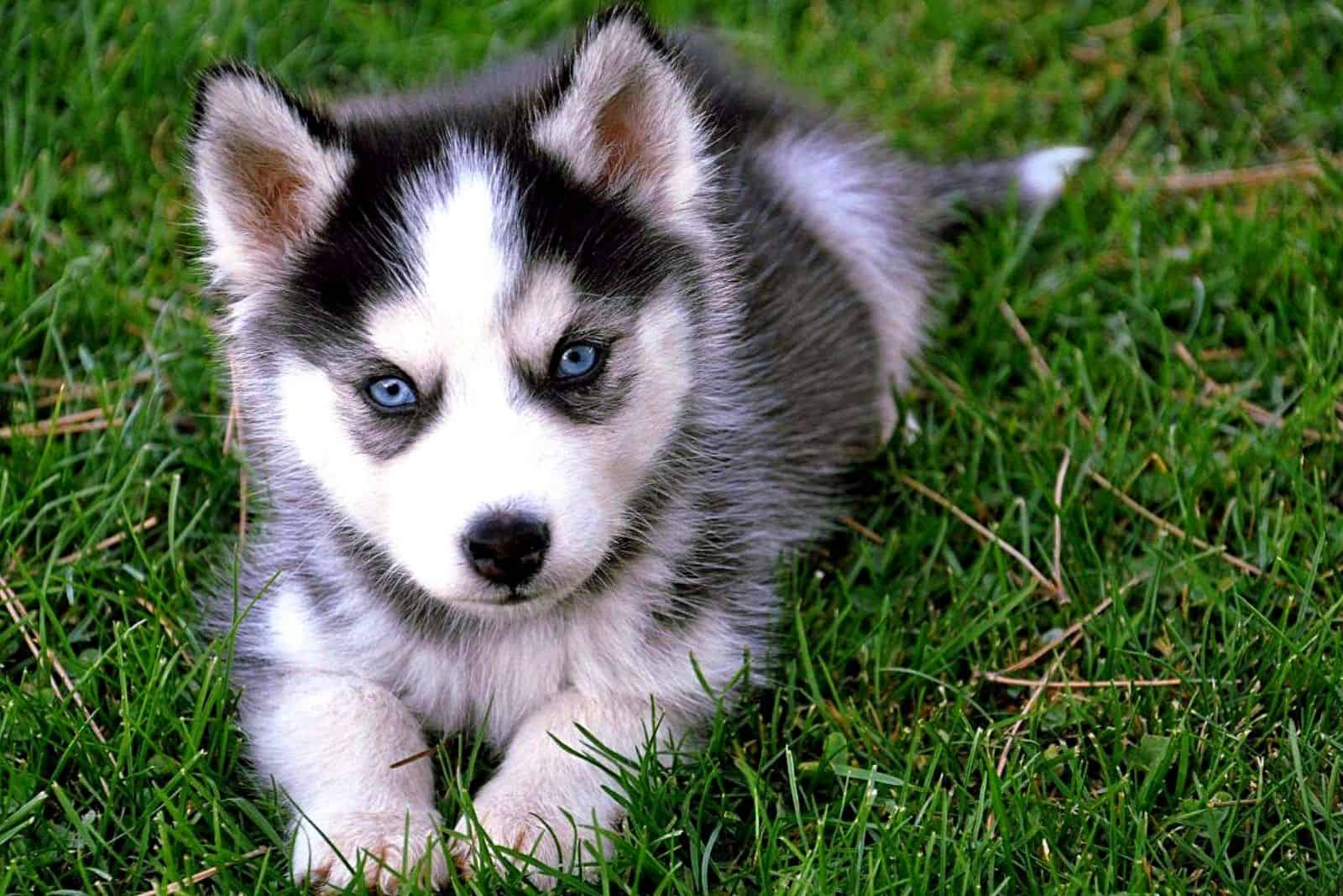
Pomskies are playful dogs with lots of energy to waste. To keep that engine going, they need the proper fuel, in other words – food!
The energetic traits were inherited from the Husky side of the family, but this doesn’t mean they should eat the same food their ancestors did.
You should feed your Pomsky high-quality dry kibble that can supplement their daily dietary needs.
Since the Pomsky comes in three different sizes, toy (5 to 9 lbs), mini (9 to 18 lbs), and standard (18 to 25 lbs), you should get the right food for their size. It’s best to consult your vet. Sometimes we’re not aware of how much damage a certain food can do. So, better keep the Pomsky ‘s diet proper and healthy to ensure your dog has a happy life.
Weight: How Big Does A Pomsky Get?
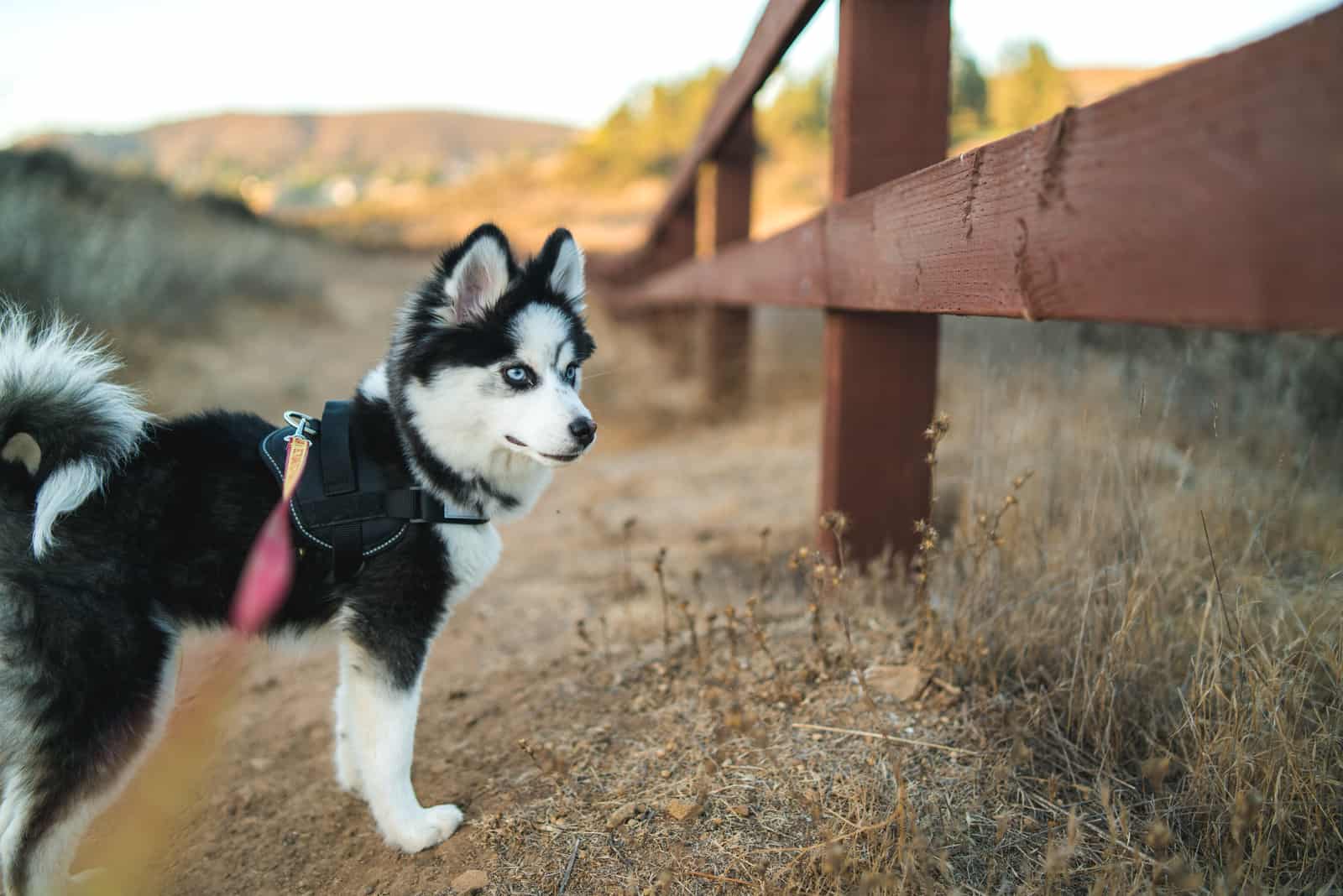
Every hybrid dog breed can have its standard weight. The average weight of any hybrid breed dog is usually estimated as the parents’ average weight.
Therefore, Pomskies can weigh between 20 to 30 pounds. Toy Pomskies weigh up to 9 pounds. Mini Pomskies weigh 9 to 28 pounds.
Since every puppy is a story of its own, it’s best to check out the parent breeds and assume the average possible weight for your puppy.
Pomsky Breeders: Choosing The Right One
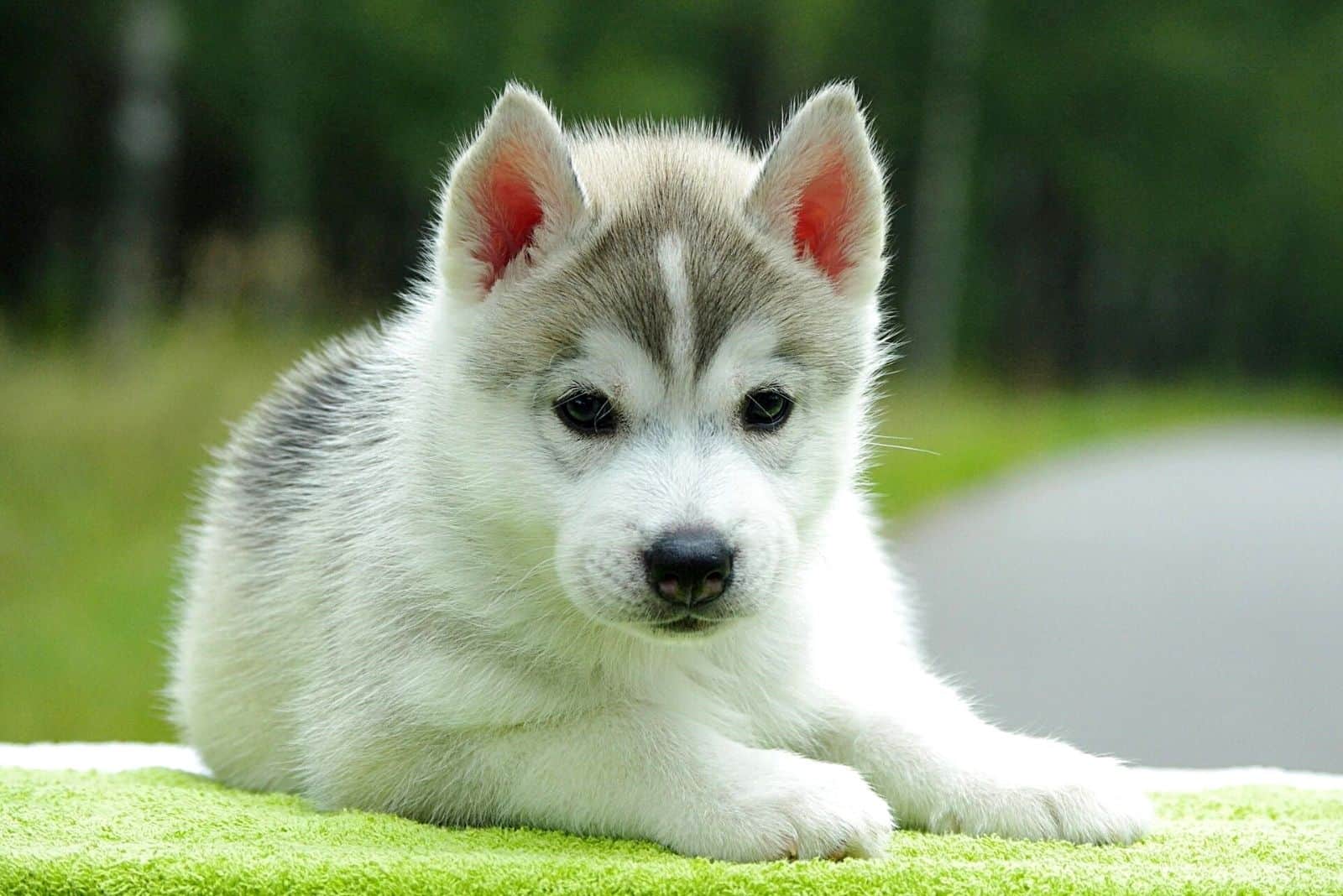
Once you find a good breeder, you will find the puppy of your dreams. A good breeder will instantly match you with the right puppy and do all the necessary health clarifications to screen out parent-related diseases.
If a breeder has no up-to-date documentation on the parents from the Orthopedic Foundation for Animals or the Canine Health Information Center but claims the stock is “vet-checked,” run away. They only want money, not what’s good for the dogs!
Also, buying a puppy from a website that offers immediate shipping isn’t something you want to do. If you do plenty of research and put effort into choosing the right car for you, then why wouldn’t you do the same when choosing your new best friend?
Bear in mind the Pomsky size is variable. Breeders who promise the puppies won’t grow more than 5 to 7 pounds are complete liars and frauds. It’s also a sign the same breeder produces unhealthy runts with a short life span.
What are the red flags when it comes to choosing the right breeder?
The list is short but important:
• puppies always available
• multiple litters on the premises
• your choice of any puppy
• paying online with a credit card
• ridiculously low price.
These do sound convenient, but real reputable breeders are old-school, and they never offer the option of purchasing Pomsky puppies online!
Sometimes it’s hard to distinguish a fake breeder from a real one. But, reputable breeders always offer puppies raised in a clean and loving home environment. They’re checked by the vet, dewormed, and already socialized to have a jump start in life.
No breeder, reputable or disreputable, can guarantee the purchased puppy isn’t sick, especially a crossbreed one. However, if you do your homework, research the breed, breeder, and facilities, you might reduce the chance of getting an ill puppy.
How Much Does A Pomsky Cost?
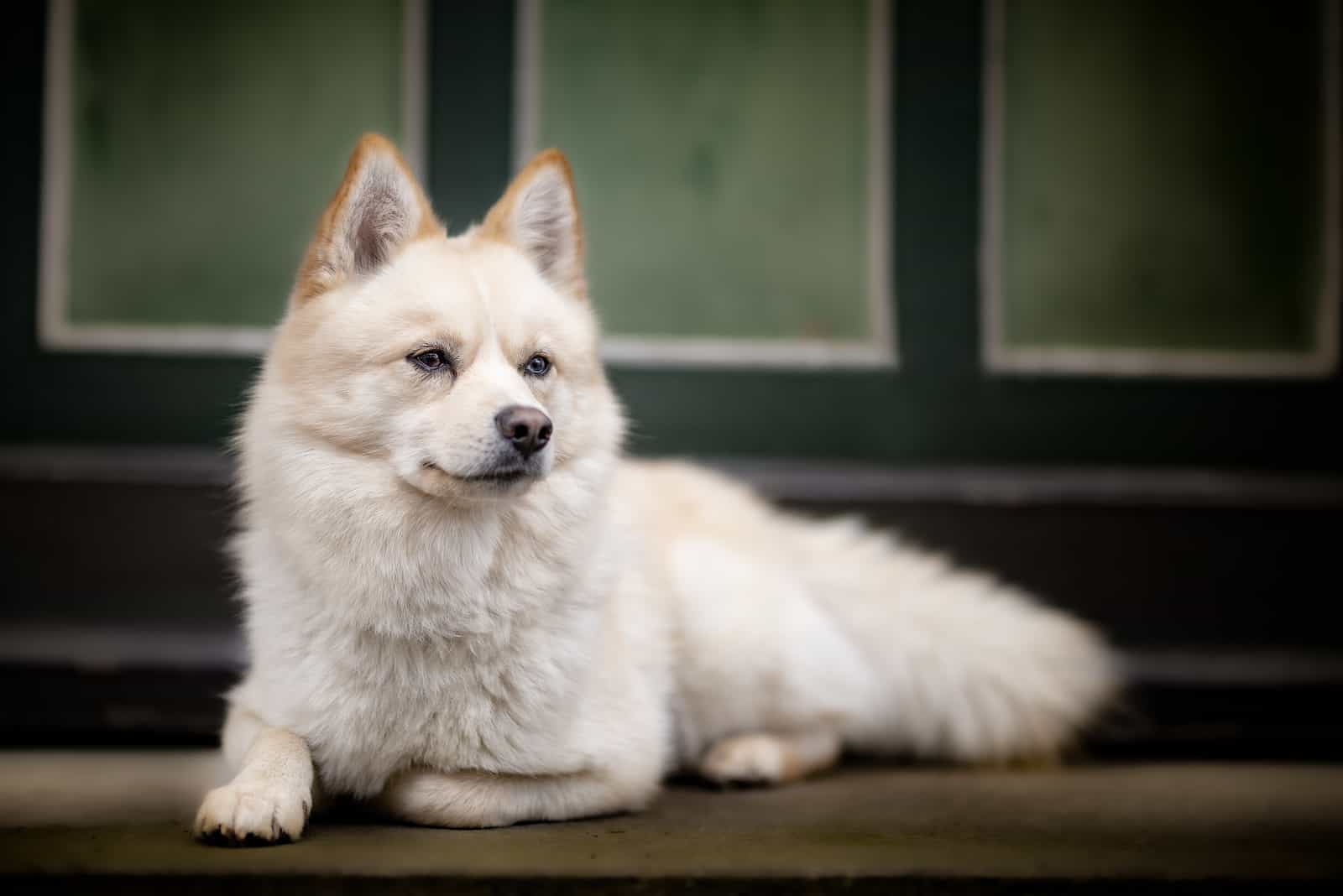
The price of a Pomsky depends greatly on numerous factors. Some of them include markings, eye color, pedigree, size, and quality. Therefore the price can range from as little as $500 to over $5,000!
On average, you can expect to pay between $2,000 and $4,000.
As we already mentioned, many factors affect the cost of a Pomsky. Let’s take a look at them.
Markings And Physical Traits
A Pomsky that exhibits a classic Siberian Husky marking with blue eyes is usually priced higher. But, beware: a high price doesn’t mean high quality at all times.
Since the Pomsky ‘s been in demand for quite some time, there is a demand for specific markings. Dog breeders use unique looks to justify their high prices. It’s a typical supply and demand scenario here.
Also, the smaller the puppy is predicted to be as an adult, the higher its price will be. Toy Pomskies are even more in demand than regular Pomskies. And if they show ideal markings and eye colors, the price tag will be even heftier.
Breeding Costs And Litter Size
Breeding Pomsky puppies isn’t cheap at all! It’s an expensive project that carries lots of risks. In addition to health screenings and genetic tests for the parents, breeders must also pay for artificial insemination and additional blood tests.
If the resulting litter has fewer puppies than expected, the breeder has to raise the puppies’ price to break even.
Pedigree
As a rule, the pedigree of the parent breeds affects the puppies’ price. If the parents have multiple dog show winnings, you can expect the puppies to be on the extremely expensive end.
Generation
Pomskies are a fairly fresh crossbreed that doesn’t have many breeding generations. The F1 generation is the first generation or the direct offspring of a purebred Husky and purebred Pomeranian male. They cost less than an F2 Pomsky or a backcross of a Pomsky to an original parent breed (F1B).
Producing F1B and F2 generation puppies is time-consuming and requires a lot of effort, so the high price is justified.
Breeder Location
It’s simple math here: breeders from rural areas charge less for their puppies than those from cities.
Breeders in big cities have a large number of people to market their puppies to, so they can charge more per puppy.
Breeder Quality And Reputation
Of course, the quality and reputation of the Pomsky breeder are important factors when picking out a Pomsky puppy .
Breeders who work on solidifying breed standards produce the healthiest, high-quality puppies that deserve to be priced more than pups from inexperienced backyard breeders.
All In All
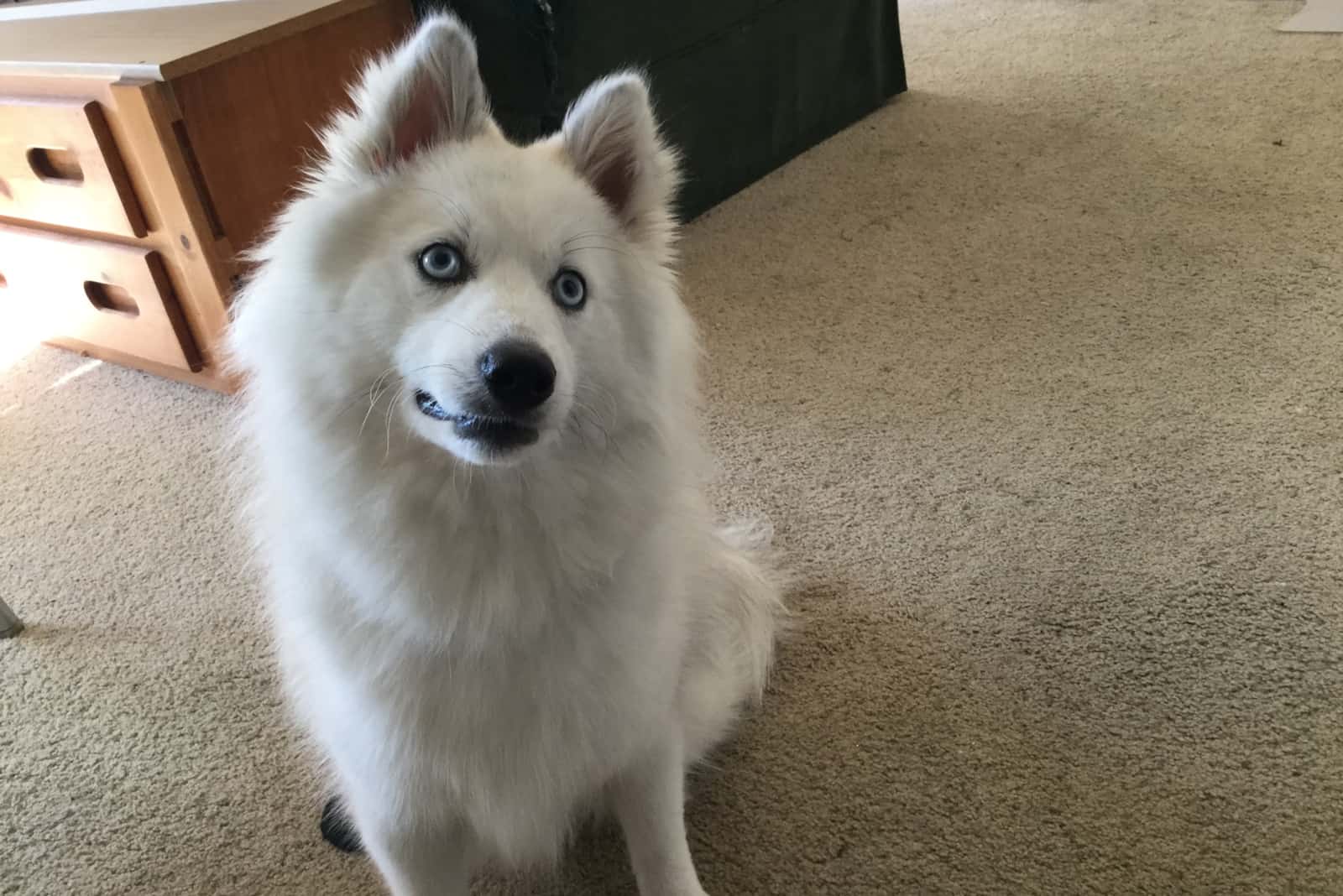
If you’re looking for a Husky-like dog that’s slightly smaller and easier to handle – look no further. If you’re looking for a puppy that will be a showstopper anywhere you go – this is your dog.
The Pomsky is a crossbreed at the start, but their future is about to become pawesome!
